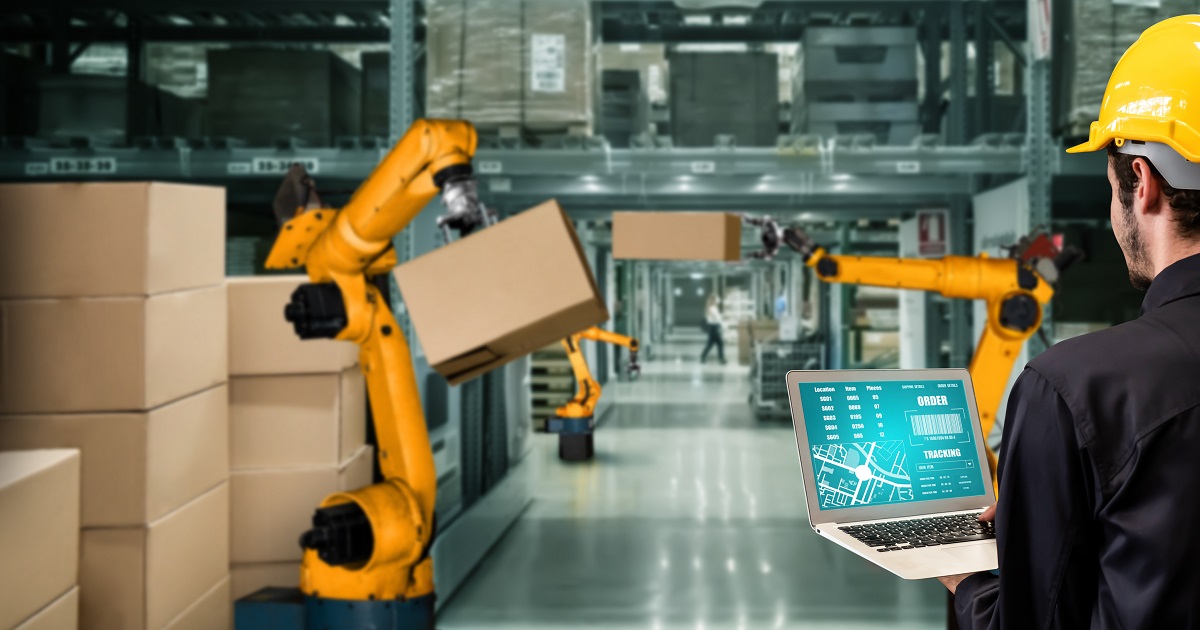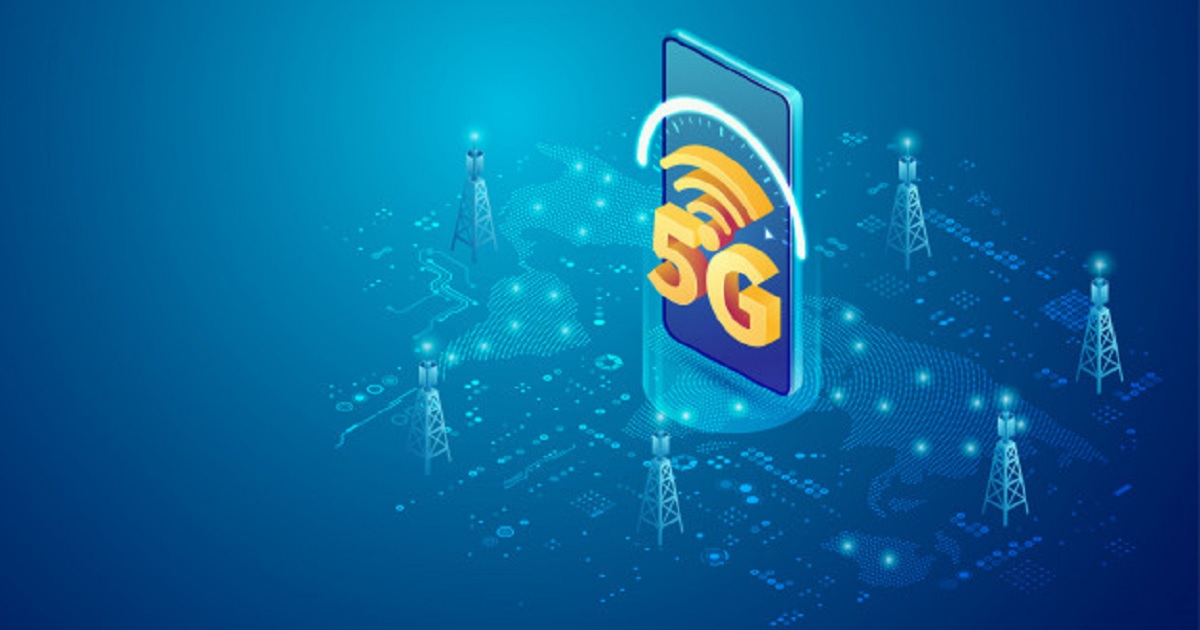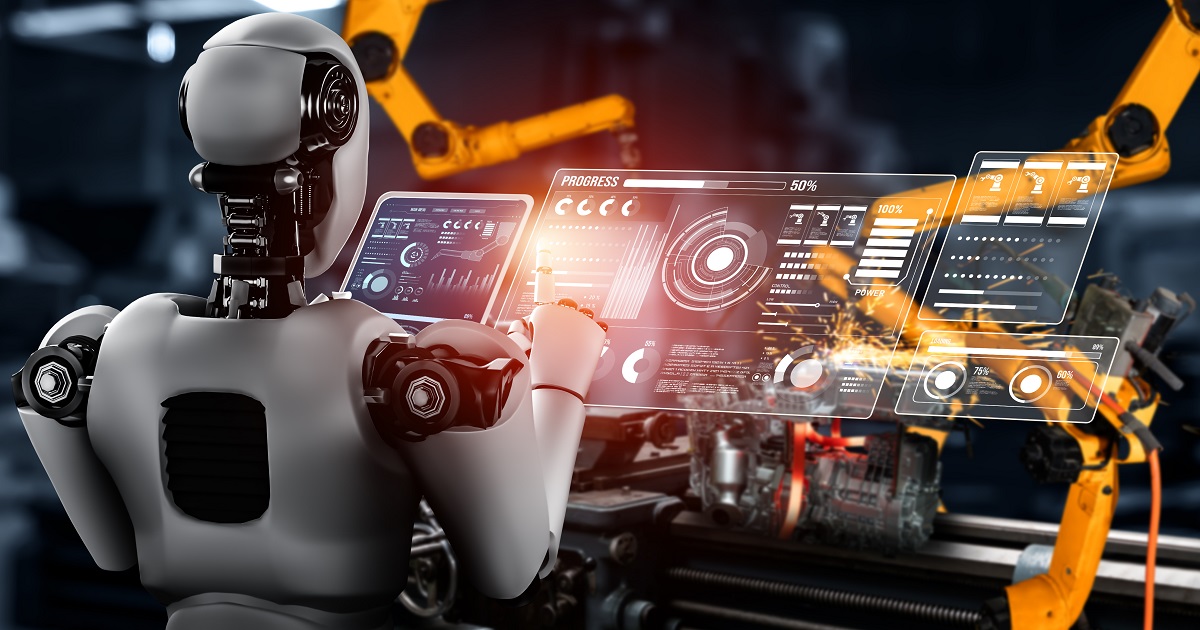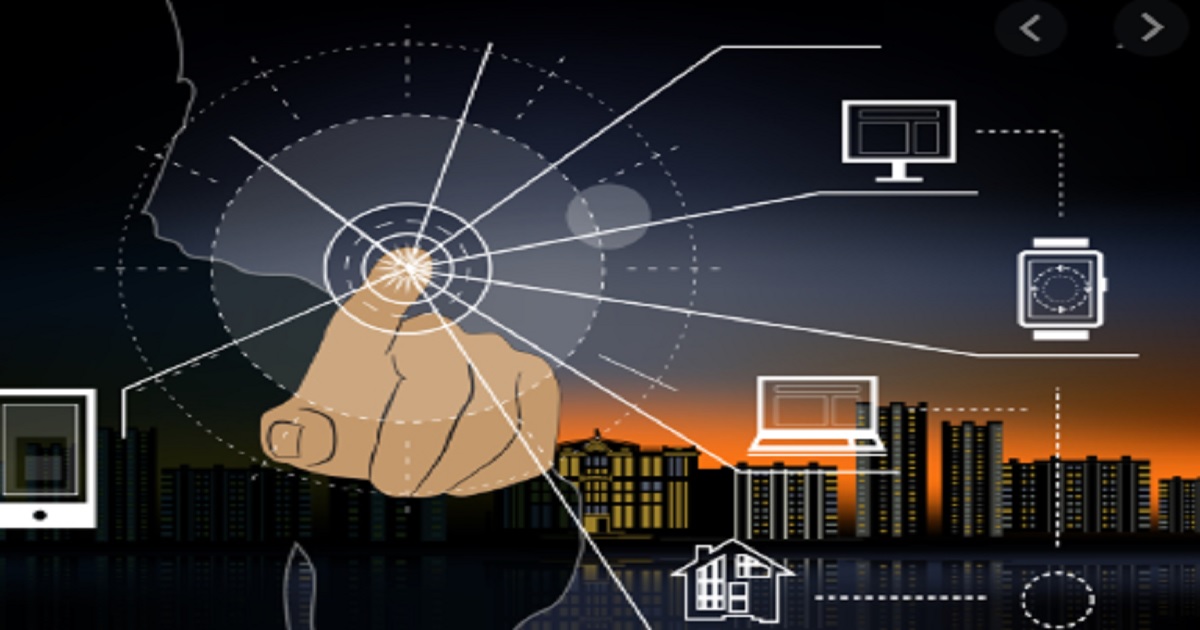
IoT Security
Article | October 11, 2023
Introduction
Automation, interconnectivity, machine-learning, and real-time data are part of Industry 4.0, a new phase in the Industrial Revolution. Industry 4.0, which includes IIoT and smart manufacturing, combines physical production and operations with smart digital technologies. It creates a more holistic and linked environment for manufacturing and supply chain management organizations.
In today's production environment, "automation" has a new, more advanced meaning than it has in the past. Industry 4.0 refers to the necessity of lean, efficient operations and the function of sustaining and improving production. In contrast, IIoT distinguishes manufacturing gadgets from consumer products that can connect wirelessly to internal networks and the internet.
IIoT Powering the Fourth Industrial Revolution
Manufacturing, logistics, oil and gas, transportation, mining, aviation, energy, and other industries use the IIoT. Its main goal is to improve operations, mainly through process automation and maintenance. IIoT capabilities improve asset performance and allow for improved maintenance management. The introduction of Industry 4.0 technologies marked a significant milestone in the human-machine relationship's history. I4.0 was first talked about in 2011. Since then, it has proliferated because of new technologies such as cyber-physical systems, IT/OT convergence, AI/ML, Blockchain, and AR/VR.
Data is at the heart of the Fourth Industrial Revolution. The growth of the Internet of Things (IoT) is one of the main reasons behind this. The IoT is making a significant contribution in making businesses smarter and improving their workflows. Moreover, more data is being made and used by connected devices than ever before, from the home to the factory.
In order to thrive in the fourth industrial revolution, businesses must embrace new technologies. The general structure of IIoT applications is defined by standards-based industrial system architectures such as the Industrial Internet Consortium's Reference Architecture. Sensors and IoT devices, IoT middleware platforms, IoT gateways, edge/cloud infrastructures, and analytics applications are all part of the stack.
The Future of the IIoT
The Industrial Internet of Things (IIoT) is primarily regarded as one of the most significant current and future trends influencing industrial companies.
To comply with new rules, industries are rushing to upgrade their systems, machinery, and equipment. This is necessary to keep up with market volatility and deal with disruptive technologies.
Safety, efficiency, and profitability have all improved dramatically in industries that have adopted IIoT. As IIoT technologies become more widely adopted, this tendency is projected to continue.
Conclusion
The fourth industrial revolution has drastically altered our perceptions of things in the workplace. At a rapid rate, capitalists are becoming more interested in sophisticated ideas.
The way forward is to embrace existing and emerging technology throughout fundamental operations to unleash more enticing possibilities. It emphasizes the importance of comprehending the impact collaborative ecosystems can have as well as how they will become a major differentiator for generating value with a better-trained workforce.
Read More

IoT Security
Article | July 5, 2023
The year 2020 was supposed to be a breakthrough year for many technologies but, most businesses have now been forced back into building an infrastructure to transit their workforce to work remotely and ensure continuity of workflow. Nevertheless, an unprecedented set of events have pushed several industries to accelerate the adoption of technologies as they continue to work from home.
5G and Wi-Fi 6 are two tech advancements that have been turning eyes around the world since their introduction. The two wireless technologies are well on their way to revolutionize the Internet of Things as businesses move fast towards digitization and the world is excited.
Table of Contents:
- Wi-Fi 6: A Breakthrough in Wireless Technology
- 5G: For a Better Connected World
- How are Wi-Fi 6 and 5G Transforming the IoT?
- 5G and Wi-Fi 6: Rivals or Allies?
Wi-Fi 6: A Breakthrough in Wireless Technology
The next-generation Wi-Fi with boosted speed was introduced last year to meet the demand for faster internet amongst the rising internet users. But, Wi-Fi 6 is simply more than a tweak in the speed.
Technically called 802.11ax, Wi-Fi 6 is the advancement in the wireless standard doing the same basic things but with greater efficiency in the device-dense areas, and offering much greater bandwidth than its predecessor 802.11ac or Wi-Fi 5. Wi-Fi 6 promises a speed up to 9.6 Gbps up four times than that of Wi-Fi 5 (3.5Gbps). In reality, this is just a theoretical maximum that one is not expected to reach. Even still, the 9.6Gbps is higher speed and doesn’t have to go to a single device but split up across a network of devices.
A new technology in Wi-Fi 6 called the Target Wake Time (TWT) lets routers set check-in times with devices, allowing communications between the router and the devices. The TWT also reduces the time required to keep the antennas powered to search for signals, which in turn also improves battery life.
Wi-Fi 6 also comes with a new security protocol called WPA3, making it difficult to hack the device passwords by simple guesswork.
In short, Wi-Fi 6 means better speeds with optimized battery lives, and improved security.
5G: For a Better Connected World
5G is the next in line to replace 4G LTE. While Wi-Fi covers small scale internet requirements, cellular networks like 5G are here to connect everyone and everything virtually on a larger scale.
The technology is based on the Orthogonal frequency-division Multiplexing (OFDM) that reduces interference by modulating a digital signal across several channels. Ability to operate in both lower bands (like sub-6 GHz) and mmWave (24 GHz and above), 5G promises increased network capacity, low latency and multi-Gbps throughput. 5G also uses the new 5G NR air interface to optimize OFDM to deliver not just better user experience but also a wider one extending to many industries, and mission-critical service areas.
The 5G technology, in a nutshell, has brought with it ultra-high speeds, increased and scalable network capacity, and very low latency.
How are Wi-Fi 6 and 5G Transforming the IoT?
5G and Wi-Fi 6 will fill up the speed gaps that our existing networks are not able to especially, in crowded homes or congested urban areas. It's not just about the speed. The two wireless technologies will increase network capacity and improve signal strengths.
On the business front, 5G and Wi-Fi 6 are both living up to the hype they created since their introduction.
Wi-Fi 6 has emerged, as the enabler of converged IoT at the edge. It has put IT into OT applications, connected devices and processed data from devices such as IP security cameras, LED lighting, and digital signage with touch screen or voice command. Wi-Fi 6 can now be used in office buildings for intelligent building management systems, occupancy sensors, access control (smart locks), smart parking, and fire detection and evacuation.
It’s (Wi-Fi 6) built for IoT. It will connect many, many more people to mobile devices, household appliances, or public utilities, such as the power grid and traffic lights. The transfer rates with Wi-Fi 6 are expected to improve anywhere from four times to 10 times current speeds, with a lower power draw, i.e. while using less electricity.
- Tom Soderstrom, IT Chief Technology and Innovation Officer at NASA’s Jet Propulsion Laboratory (JPL)
Similarly, 5G will open doors for more devices and data. It will increase the adoption of edge computing for faster data processing close to the point of action. The hype around 5G is because of the three key attributes it comes with: enhanced mobile broadband (eMBB), ultra-reliable low-latency (uRLLC), and massive IoT device connectivity (mMTC). But there is the fourth attribute that sets it apart from its predecessor: use of a spectrum that operates at the low-end frequency range (typically 600 MHz). Called as ‘low-band 5G’, it delivers high speeds with signals that go for miles without propagation losses and ability to penetrate obstacles. The 5G operates in the new millimetre-wave bands (24 to 86 GHz) delivering more capacity to enable many low-power IoT connections.
If we were to point down the benefits, these two wireless technologies are bringing to the Internet of Things those would be:
Increased Human-Device Interactions
Increased Data and Devices
More IoT investments
Advancing to the Edge
Acceleration towards Industrial IoT
Enhanced use of IoT devices
Better VUI
5G and Wi-Fi 6: Rivals or Allies?
In February, Cisco estimated that by 2023 M2M communications will contribute to 50% or about 14.7 billion of all networked connections. Cisco’s Annual Internet Report reveals that 5G will enable new IoT applications with greater bandwidth and lower latencies and will accelerate innovations at scale. The same report estimates that 10.6% of global mobile connections in 2023 will be 5G, while Wi-Fi 6 hotspots will be 11.6% of all public Wi-Fi hotspots growing 13 times from 2020 through 2023.
Wi-Fi6 will serve as a necessary complement to 5G. A significant portion of cellular traffic is offloaded to Wi-Fi networks to prevent congestion and degraded performance of cellular networks (due to demand).
- Thomas Barnett, Director of Thought Leadership, Cisco Systems
The two technologies are here to feed different data-hungry areas with gigabit speeds.
With lower deployment costs, Wi-Fi 6 will be dominating the home and business environments where access points need to serve more users covering devices like smartphones, tablets, PCs, printers, TV sets, and streaming devices. With an unlicensed spectrum, the performance of Wi-Fi 6 depends on the number of users, that are using the network at the same time.
5G, with its longer range, will deliver mobile connections and accelerate smart city deployments and manufacturing operations. Like LTE, 5G speeds will depend upon users’ proximity to base stations and the number of people using that network.
The performance of the two depends largely on the area where they are being deployed. For instance, Wi-Fi can very well handle machine-to-machine communications in a managed manufacturing unit, whereas 5G can enhance campus-wide manufacturing operations efficiently. Businesses will have a decision to make which among the two wireless networks fulfils their data appetite.
In conclusion, the two wireless technologies continue to develop in parallel and causing the next big wave in the Internet of Things.
Read More

IoT Security
Article | July 17, 2023
Introduction
We live in a world where technology is becoming more and more intertwined with our daily lives. It’s no longer just our laptops, smartphones, and tablets connected to the internet – now, our homes, cars, and even our clothes can be too. This interconnectedness is made possible by the internet of things (IoT), a network of physical objects equipped with sensors and software that allow them to collect and exchange data.
IoT devices have the potential to transform the way we live and work. They can make our lives more convenient and help us be more efficient. IoT devices can also help us to save money and to improve the quality of our lives.
IoT devices are devices that are connected to the internet and can collect, send, and receive data. They can be anything from fitness trackers to industrial machines. IoT devices are used across a variety of industries, and they are becoming more and more commonplace. At [x]cube LABS, we have helped global enterprises deliver great value to their consumers with IoT devices, and in this blog post, we will talk about how IoT devices are used in different industries. Additionally, we will give some examples of IoT devices that are being used in each industry.
Healthcare
IoT devices are being used in healthcare to provide better patient care and to improve the efficiency of healthcare organizations. IoT devices can be used to monitor patients’ vital signs, track their medication adherence, and collect data about their health. IoT devices can also be used to provide remote patient monitoring, track medical equipment, and support clinical research.
There are many different types of IoT devices that are being used in healthcare. Some of the most common types of IoT devices that are being used in healthcare include wearable devices, such as fitness trackers and smartwatches; medical devices, such as pacemakers and insulin pumps; and hospital equipment, such as IV pumps and ventilators. All these devices collect data that can be used to improve patient care and make healthcare organizations more efficient.
Manufacturing
IoT devices are being used in manufacturing to improve the efficiency of production lines and to reduce the amount of waste. IoT devices can be used to track the production of products, monitor the condition of machinery, and control the flow of materials. IoT devices can also be used to provide data about the quality of products and to improve the safety of workers.
One of the most common types of IoT devices that are being used in manufacturing is the industrial sensor. Industrial sensors are used to monitor the production of products, the condition of machinery, and the flow of materials. Industrial sensors can also be used to provide data about the quality of products and to improve the safety of workers. The availability of data from industrial sensors is helping manufacturers to improve the efficiency of production lines and to reduce the amount of waste.
Retail
IoT devices are being used in retail to improve the customer experience and increase sales. IoT devices can be used to track inventory, provide customer loyalty programs, and collect data about customer behavior. IoT devices can also be used to provide personalized recommendations, targeted promotions, and real-time customer support.
IoT devices are changing the retail sector in a number of ways. One of the most important ways that IoT devices are changing retail is by providing retailers with real-time data about their customers’ behavior. This data allows retailers to provide a more personalized shopping experience. IoT devices are also being used to improve the efficiency of retail operations, such as inventory management and customer loyalty programs.
Transportation
IoT devices are being used in transportation to improve the safety of drivers and reduce traffic congestion. IoT devices can be used to monitor the condition of vehicles, track their location, and control their speed. IoT devices can also be used to provide data about traffic conditions and to improve the efficiency of transportation systems.
One of the most common types of IoT devices that are being used in transportation is the GPS tracker. GPS trackers are used to monitor the location of vehicles, and they can be used to track the speed and movement of vehicles. GPS trackers can also be used to provide data about traffic conditions and to improve the efficiency of transportation systems.
Agriculture
Agriculture has become increasingly reliant on IoT devices in recent years. IoT devices are being used in agriculture to improve the yield of crops and to reduce the amount of water and fertilizer that is used. IoT devices can be utilized to monitor the condition of crops, track the location of farm animals, and control the flow of irrigation water.
These innovations are helping farmers to increase the yield of their crops and to reduce the amount of water and fertilizer that is used. The data collected by IoT devices is also helping farmers to make more informed decisions about planting, irrigation, and crop maintenance.
Smart Homes
Smart homes are becoming increasingly popular, and IoT devices are the backbone of these systems. IoT devices are being used in homes to improve the security of the home, reduce energy consumption, and improve the quality of life. They can be used to monitor the condition of the home, track the location of family members, and control the operation of home appliances. What’s more, IoT devices can also provide data about the quality of the air, which can be used to improve the efficiency of home security systems. In the future, IoT devices will become an integral part of the smart home, and they will be used to control a wide variety of home appliances and systems.
Aviation
The aviation industry is making use of IoT devices to a great extent. The aviation sector is one of the most heavily regulated industries in the world, and IoT devices are being used to improve the safety of passengers and crew members.
IoT is changing the aviation industry by providing data that can be used to improve the safety of pilots and passengers. IoT devices can be used to monitor the condition of aircraft, track their location, and control their speed. IoT devices can also be used to provide data about weather conditions and to improve the efficiency of aviation operations, which can ultimately lead to lower airfare prices.
Energy
The energy sector is also utilizing IoT for a variety of applications. One way that IoT is changing the energy sector is by providing data that can be used to improve the efficiency of energy production and consumption.
They are being used to improve the efficiency of power generation and distribution. IoT devices can be used to monitor the condition of power plants, track the location of power lines, and control the flow of electricity. By using IoT devices to monitor and optimize the power grid, energy companies can reduce the amount of power that is wasted and ultimately lower energy bills for consumers.
Conclusion
IoT devices are changing the world in a number of ways. They are providing data that can be used to improve the efficiency of operations in a variety of industries, from retail to transportation to agriculture. It is likely that IoT devices will become an increasingly important part of our lives in the future due to the efficiency and data that they can provide.
Read More

Article | April 14, 2020
The survey data I’m referring to comes from a study conducted by the Eclipse Foundation about the adoption of commercial Internet of Things (IoT) technology. The aim of the study was to get a better understanding of the IoT industry landscape by identifying the requirements, priorities, and challenges faced by organizations deploying and using commercial IoT technologies. More than 350 respondents from multiple industries responded, with about a quarter of respondents coming from industrial production businesses. While this survey was not solely focused on the manufacturing and processing industries, its results reflect the general business community’s IoT adoption at the end of 2019. As such, it is a pre-COVID-19 snapshot of IoT adoption.
Read More